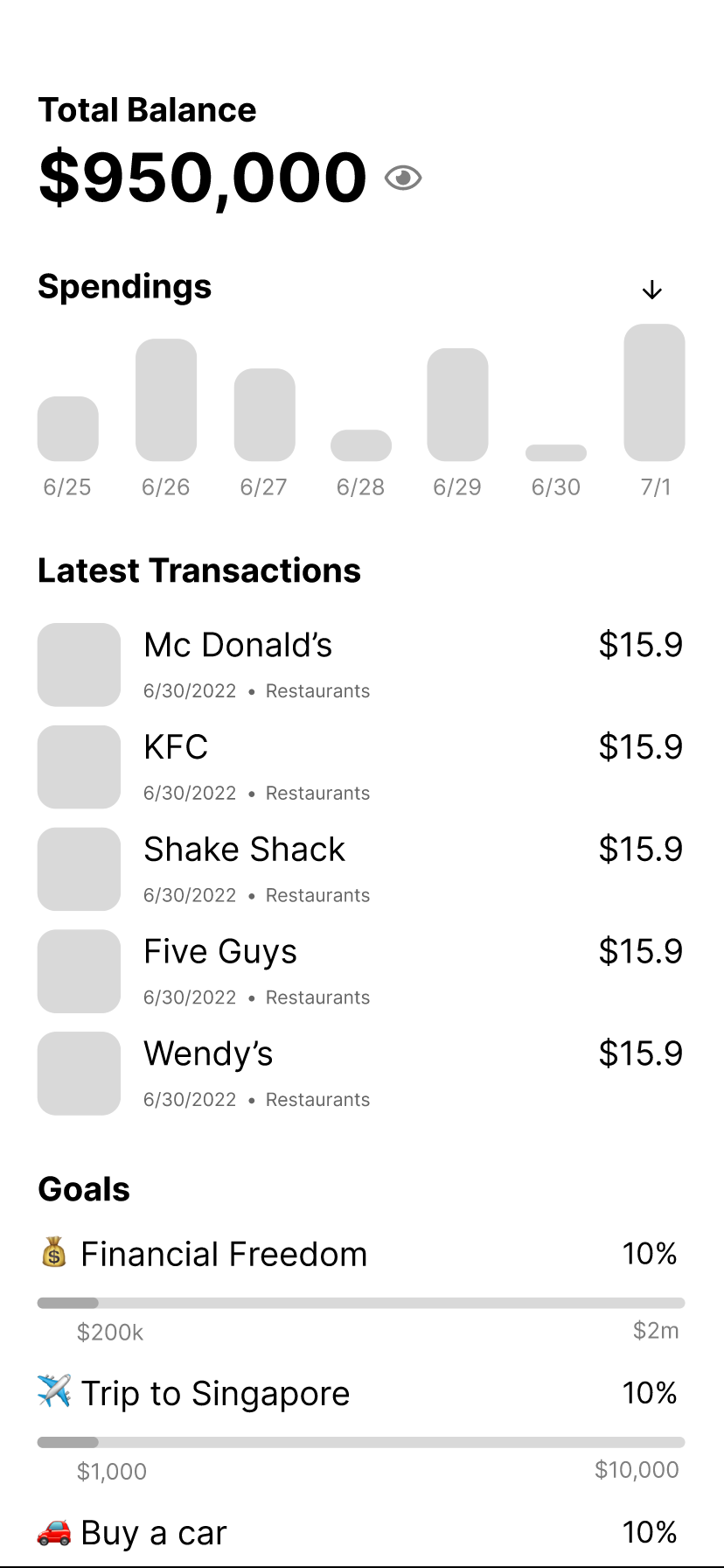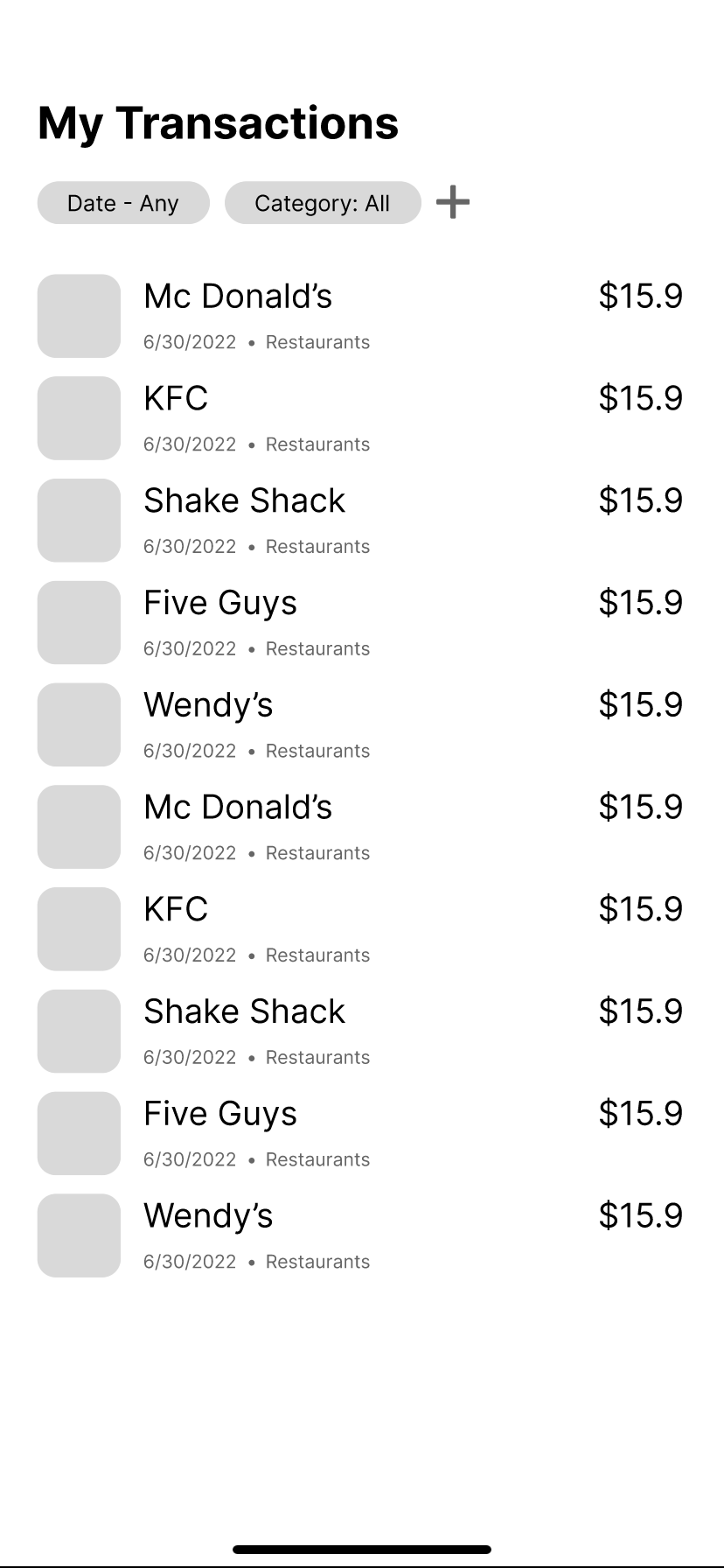Day 7 - Started designing UI/UX
Designing UI/UX as an engineer (Don't expect much)
TLDR; An entrepreneurial-minded software engineer who worked for a YC startup, wants to build another expense tracker app while documenting his journey.
Previous post → Day 0 - The beginning
What have I done?
I was planning to first create a prototype with Google Sheets, and I tried to use this free template, which seemed simple and powerful. However, it turned out to be way more complex than I thought just to set it up. Then I also realized that logging expenses using Google Sheets’ iOS app is just a horrible experience. That’s not helpful for myself to create a great expense tracker!
Out of frustration, I then decided to jump right into UI/UX design. I started brainstorming features of the app in Notion, and then moved on to creating initial rough UX sketches.
Now you may ask, where’re all the other steps before designing UI/UX, like competitor analysis, customer journey map, user research, etc.? Well, I wish I can follow a proven product design system, and tell you guys that “this is THE way to build great products!” The truth is, I don’t have one, at least not yet. And I’m doing this as a solo dev on a part-time basis…having more processes are just gonna delay the chance of ever shipping something out. (Thanks for listening to my self-justifications for being lazy and disorganized)
The good news? I’m solving my own problem, so I can iterate with the solution quickly within my mind, using just pure imagination. I just have to constantly ask myself - “Is this what I want for an expense tracker?” I think this is a major advantage when you’re building something for yourself vs. building it for others. Eventually I’ll have to consider others’ perspectives too, but at least not now. Because if I can’t even build something that satisfies myself, why would I be confident that my product would satisfy others?
And the result for that mental iteration of solutions is as follows… (Speaking as if I never looked at other designs on Dribbble or Pinterest for inspirations, which I did)
The screen above is the dashboard for my expense tracker app. I want it to be a place where it gathers the most important financial information to myself, such as my net worth, recent spending trends, latest transactions, my biggest financial goals, current month’s budget, etc.
The next screen is the full list of transactions, it’ll be an infinite list with filters and sorting capabilities.
There’ll also be screens for budgets, goals, data analytics, and more… I’ll keep designing and refining until I feel good about it.
What have I learnt?
1) It’s not easy to work on a side-project solo + part-time, but there can be a lot of fun! For procrastination issues, I’ve resorted to using Flow Club , it’s an amazing service which provides you group accountability to actually get shit done. Can’t recommend more!
2) This build-in-public thing is amazing, so far I’ve gotten tons of comments / support from people at multiple places (YC startup school forum, reddit, twitter, substack, facebook, etc.), and gained some subscribers too. This motivates me to continue even if I have no one physically next to me pushing myself. I hope I can continue document and deliver value to all you great folks out there!
3) I’ve attended a 1-hour small meeting hosted by @theNickFriend and @BrandonCarter, both incredibly experienced SaaS startup founders, and I’ve learnt that
B2C SaaS like my expense tracker is gonna be tougher to become profitable in general when compared to B2B SaaS, where the revenue-per-customer can be a lot higher and you can afford distribution tactics like hiring a sales team, cold-messaging prospects, etc. My expense tracker is gonna be a slow grind to revenue unless I come up with some viral marketing tactics on TikTok or something.
The proper way to cold-message someone is to offer him/her some free value first, rather than directly asking for a favor and expecting altruism.
Be as unscalable as you can in the beginning, for example if you want to build an expense tracker, maybe try providing a service to help others track their expenses manually first, and see if they’re willing to pay for it too. It’s also a great learning process. (I’m not doing it yet because I’m solving my own problem already)
No need to worry about market downturn if you’re still early in the startup game. In fact, if you want a great exit, now is the best time to start building something, and sell it 10 years later at the peak of another bull cycle.
Perhaps I can position my expense tracker to serve a niche market’s needs first, e.g., digital nomad (I’m one), then expand.
There were definitely more learnings but I forgot
4) The way to keep my build-in-public journey sustainable is to focus on building, instead of creating perfect content. I’ve tried building in public long ago and it failed because I focused way more into crafting perfect blog posts and updating daily, etc. This time, it took me around 1 hour to write this post : )
What’s next?
I’ll continue with the UI/UX design process, and once I feel like a good enough product is there, I’ll move on to actual coding.
Or follow me on Twitter @kaidenio
Updated - Day 14 - Started coding a prototype
Stay tuned : )
Best,
Kaiden



Good job! Keep Going!
Looks great! What app have you used to make the sketches?